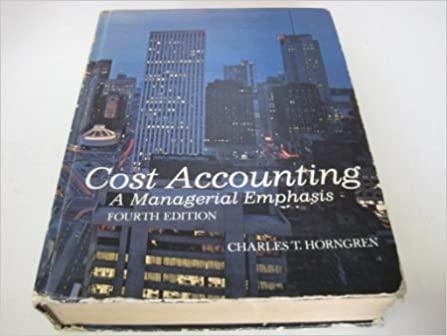Prediction Error (J. Demski) Ralph Swash, an aggressive entrepreneur, is working on some make-or-buy decisions and a
Question:
Prediction Error (J. Demski) Ralph Swash, an aggressive entrepreneur, is working on some make-or-buy decisions and a related inventory system. For one such product (and you may assume, for purposes of argument, that all such situations are independent), he decides to use the classic economic-lot- size model with no stockouts to determine an optimal order quantity. He initially predicts that annual demand will be 2,000 units, that each unit will cost $45, that the incremental cost of processing each order (and receiving the ordered goods) will be $67 in this case, and that the incremental cost of storage, in this case, will be $6 per physical unit per year.
1. What is the optimal order quantity?
2. What are the total relevant costs of inventory from following your policy in part 1 above?
3. Suppose that Swash is incorrect in his $67 incremental-cost-per-order prediction but is precisely correct in all other predictions. State and solve the equation to predict the maximum amount Swash should pay to dis-cover the true incremental cost per order if
(a) this true cost is $33 per order and
(b) in the absence of any knowledge to the contrary, Swash will implement the solution in part 1 above and will not alter it for one full year. 4. What happens to your answer in part 3 above if we admit that Swash has also made errors in predicting demand, price, and the cost of storage? 5. Suppose Swash implements the solution in part 1 above for two years. Further suppose that all of his initial predictions were (and are) correct, except that the actual incremental cost of storage is $20 per average unit. If it costs Swash $4 to alter his inventory policy, state the equation to determine the cost of prediction error of not changing his inventory policy at the beginning of the second year. Note: you may assume that the in- ventory cycle precisely repeats every year; otherwise you would have to adjust for nonintegral values. lop5
Step by Step Answer:






